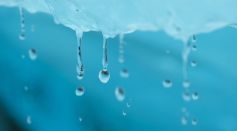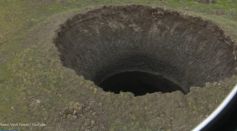CHEMISTRY
LOOK: The World's First Real Retractable Lightsaber Inspired From Star Wars
Meet 5 Women Who Made Scientific History
Researchers Around the World Share Atmospheric Changes During the Pandemic

Unique Enzyme Combination Could Reduce Global Plastic Waste

This Startup Is Growing Sushi-Grade Salmon From Cells in a Lab

3 Characteristics of Water That Seem to Defy the Laws of Physics
Coca-Cola Uses 100% Recycled Plastic for their Bottles in Netherlands and Norway
Chemical Used as Defense Against Pests, Used by Moths to Lay Eggs

Reassembled Catalyst Enables Efficient Production of Hydrogen Gas

"Colossal Forces of Nature" Blast 165-ft Deep Hole in Russian Tundra
[WATCH] Biggest Coca-Cola Eruption Ever! Russian YouTuber Uses 10,000 Liters of Coke

Firefighters Deal With This Carcinogen Daily

Seattle-Based Company Develops Beanless Coffee

Experts Warn Oleander Plant NOT a COVID-19 Cure
Most Popular

Microplastics Are Everywhere — How Plastic Pollution Threatens Wildlife, Soil, and Water

Brain Health Aging Guide: Effective Strategies for Cognitive Decline Prevention and Lower Dementia Risk

Mitochondrial Health and Aging: How Cell Energy Drives Modern Anti-Aging Science

How Scientists Use Radio Telescopes to Search for Alien Signals Across the Universe





